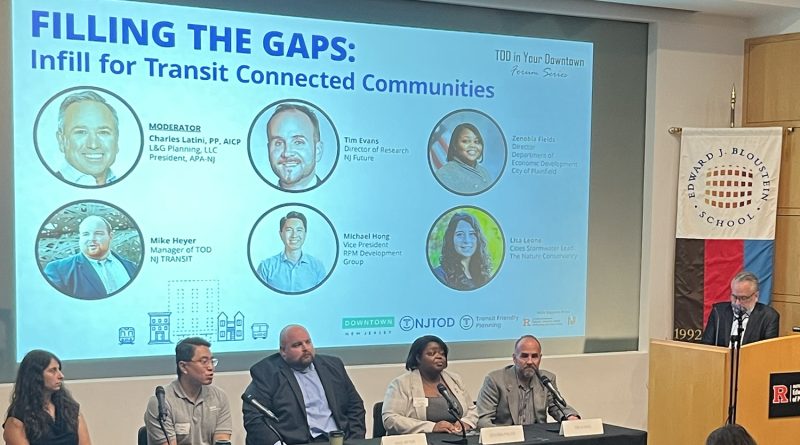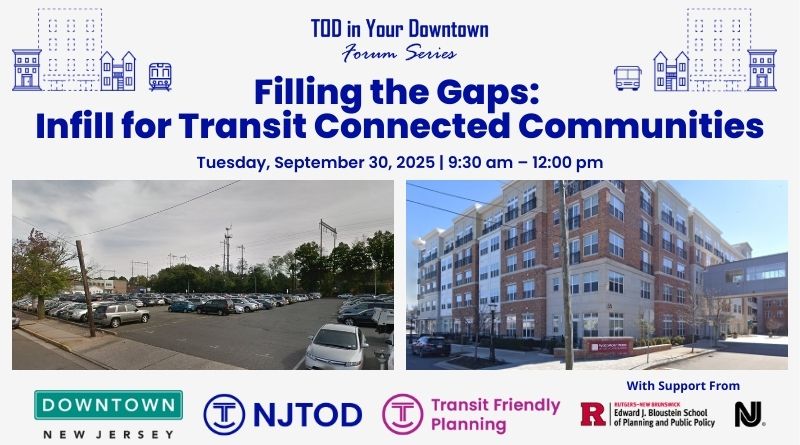On September 30, NJTOD, NJ TRANSIT’s Transit Friendly Planning (TFP) program, and Downtown New Jersey hosted Filling the Gaps: Infill for Transit Connected Communities at the Edward J. Bloustein School of Planning and Public Policy in New Brunswick. The event brought together experts, practitioners, and researchers to explore the environmental, economic, and social benefits of infill development and strategies for implementing it effectively.
Welcoming Remarks
Stephanie DiPetrillo, Principal Investigator of NJTOD, and Natalie Pineiro, Executive Director of Downtown New Jersey, opened the event. Ms. DiPetrillo highlighted NJTOD’s role as a statewide and national resource for sharing best practices and addressing challenges in transit-oriented development. She noted that 2025 marks the 20th anniversary of NJTOD and the Rutgers-VTC and NJ TRANSIT TFP collaboration, and promoted the upcoming VTC Distinguished Lecture on October 29 featuring Dr. Erick Guerra of the University of Pennsylvania.
Ms. Pineiro emphasized infill development as a critical tool for creating strong, equitable communities and downtowns. She invited attendees to the 2025 Downtown New Jersey Conference in Flemington on October 23, themed Street-Level Magic: Building Experiential Downtowns, which focuses on placemaking and people-centered design. She concluded by thanking the panelists and inviting Charles Latini to formally open the event.
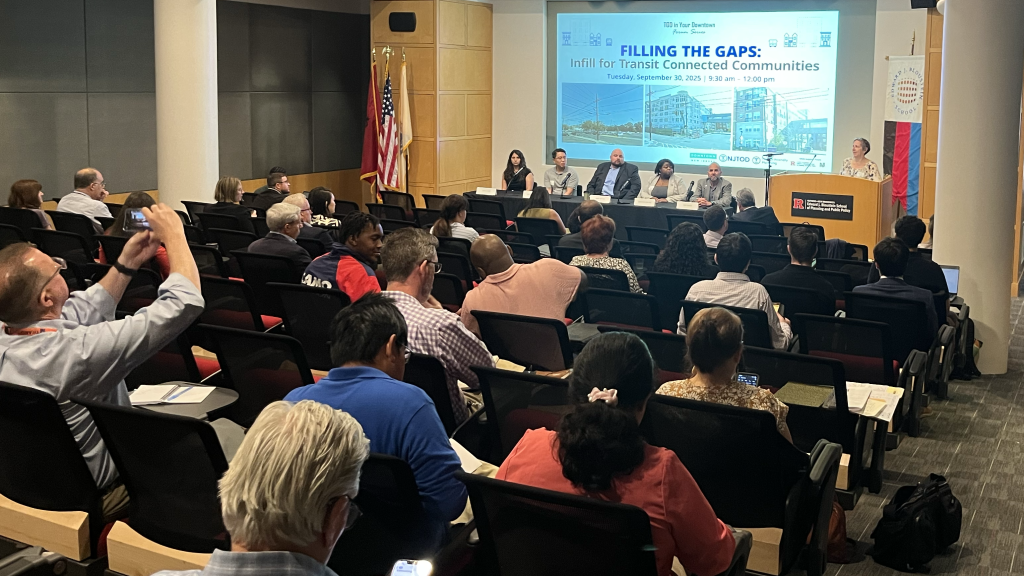
Panelist Presentations
Charles Latini, principal of L&G Planning and outgoing APA-NJ president, opened by celebrating the central role of transit-oriented development in advancing sustainability, equity, and growth in New Jersey. Reflecting on over 30 years in the field, he noted how concepts like infill have moved from discussion to mainstream practice.
Tim Evans, Director of Research at New Jersey Future, addressed the challenge of measuring infill development. He framed infill as part of broader redevelopment, showing that from 1990 to 2007, only around 15 percent of population growth occurred in municipalities that were at least 90 percent built-out, whereas today, nearly 60 percent of growth happens in those areas. He emphasized that “built-out” does not mean full; these municipalities still had sufficient land to grow within the urban core, surrounded by amenities like transit, walkable retail, and jobs.
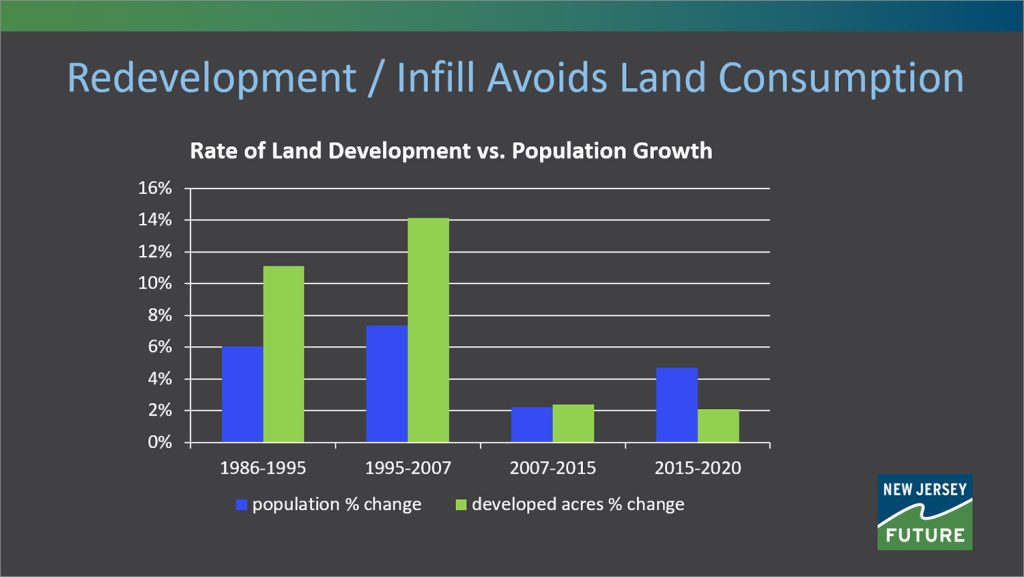
This shift in population patterns has also reversed the relations between land consumption and population growth. Between 1986 and 2007, land developed at twice the rate of population growth. In recent years, that trend has flipped: population growth now outpaces land consumption, allowing New Jersey to preserve more open space even as its population rises.
Mr. Evans attributed this trend to three key factors: the dissolution of the Council on Affordable Housing (COAH), demographic shifts, and deliberate planning efforts. After COAH dissolved in 2015, affordable housing mandates shifted to court oversight, spurring multifamily construction in urban areas. Municipalities often require 15–20 percent affordable set-asides in new developments. At the same time, millennials—and later Gen Z—entered the housing market with strong preferences for urban living. Finally, state and local governments reinforced smart growth strategies, channeling development into areas that needed reinvestment while preserving open space elsewhere.
He concluded by highlighting how infill strengthens connectivity within urban street networks, particularly in suburban areas dominated by large parking lots. Such projects offer opportunities to link fragmented parcels and auto-oriented land uses back into the surrounding community, counteracting the exclusionary outcomes of earlier development patterns.
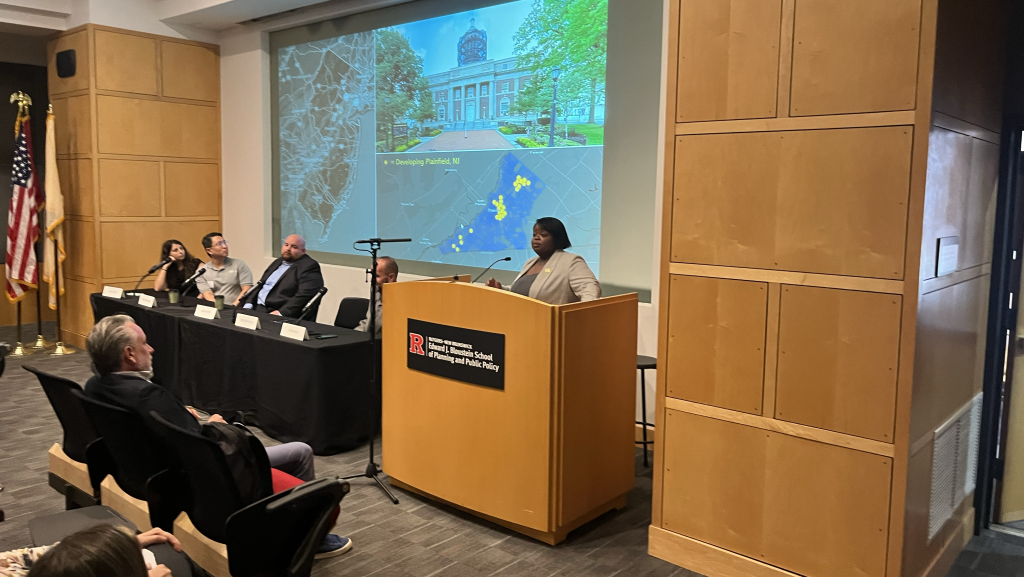
Zenobia Fields, Director of Economic Development for the City of Plainfield, started by explaining that Plainfield was a mostly built-out city with very few green spaces left, but still needed to encourage development for economic revitalization and affordable housing. To meet this challenge, the City focused on redeveloping brownfield sites, transit areas, and city-owned surface parking lots.
She highlighted several successful multifamily and mixed-use infill projects near Netherwood and Plainfield stations, including 803 South, a 104-unit development, and 1000 North, a 120-unit project. Plainfield is also advancing the adaptive reuse of its former YMCA building. The project received a historic preservation grant and will feature a 55,000 sq. ft. cultural and recreation center, a 100 percent affordable 218-unit development, new green space and plaza, and a sustainable parking garage with solar panels and solar walls.
Ms. Fields advised municipal planners and officials to ensure that developments align with community goals. She emphasized that revitalization benefits both municipalities and developers, and that cities can leverage projects to secure public amenities such as plazas, green spaces, and pedestrian connections.
Mike Heyer, Manager of Transit Oriented Development at NJ TRANSIT, discussed Hoboken Connect, a major infill and infrastructure investment project that will reclaim and revitalize the area surrounding Hoboken Terminal. Leveraging the station’s extensive transit connections, NJ TRANSIT is advancing high-density, mixed-use development across multiple sites. The project will include 700,000 sq. ft. of office space, 70,000 sq. ft. of retail, 386 residential units, and 2 acres of parks and open space.
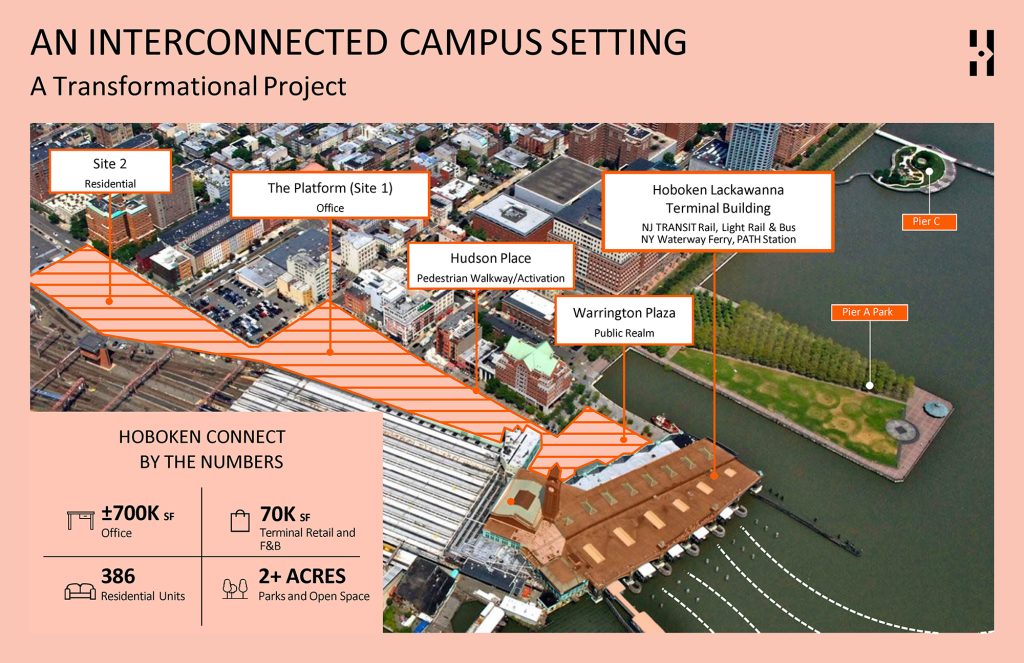
In addition to supporting new development, NJ TRANSIT will implement significant upgrades to improve flood protection and pedestrian and bicycle access. Warrington Plaza, currently just three feet above sea level, will be elevated and redesigned with reduced impervious surfaces and new stormwater detention areas to better manage runoff. Surrounding streets will be revamped to prioritize walking and cycling, transforming the Hoboken Terminal area from a pass-through space into a connected, multimodal hub.
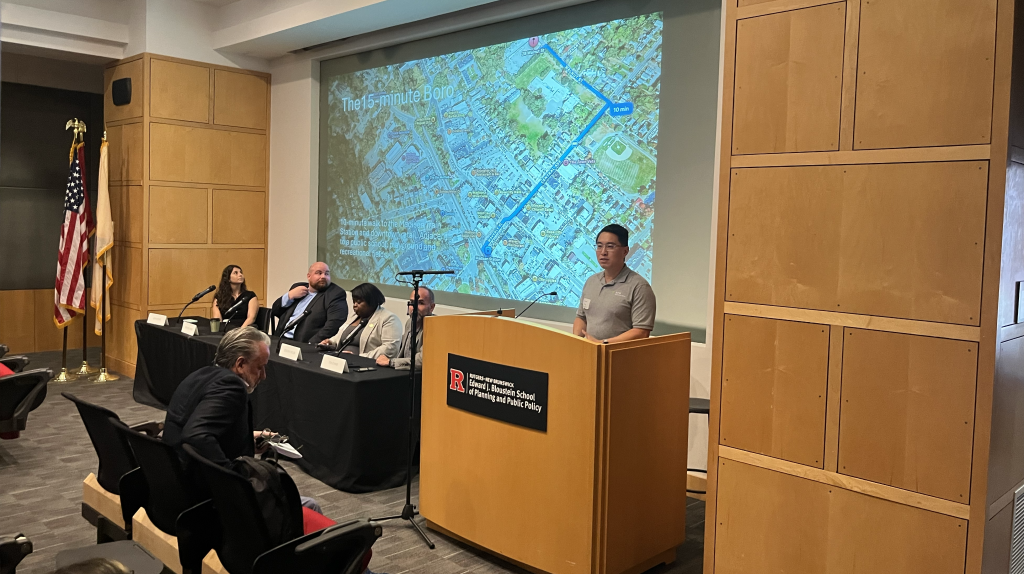
Michael Hong, Vice President of Development at RPM Development Group, discussed a sustainable infill housing project near NJ TRANSIT’s Madison Station. The homes feature an ultra-efficient, all-electric design that reduces heating and cooling demand by 90 percent, significantly lowering energy use. The development includes eight units affordable at 60 percent Area Median Income, and Mr. Hong highlighted the importance of locating affordable housing near transit in higher-income communities to support upward mobility.
The project benefits from proximity to transit, schools, and community amenities; still, Mr. Hong stressed that strong pedestrian and bicycle connections are essential to fully realize the site’s potential.
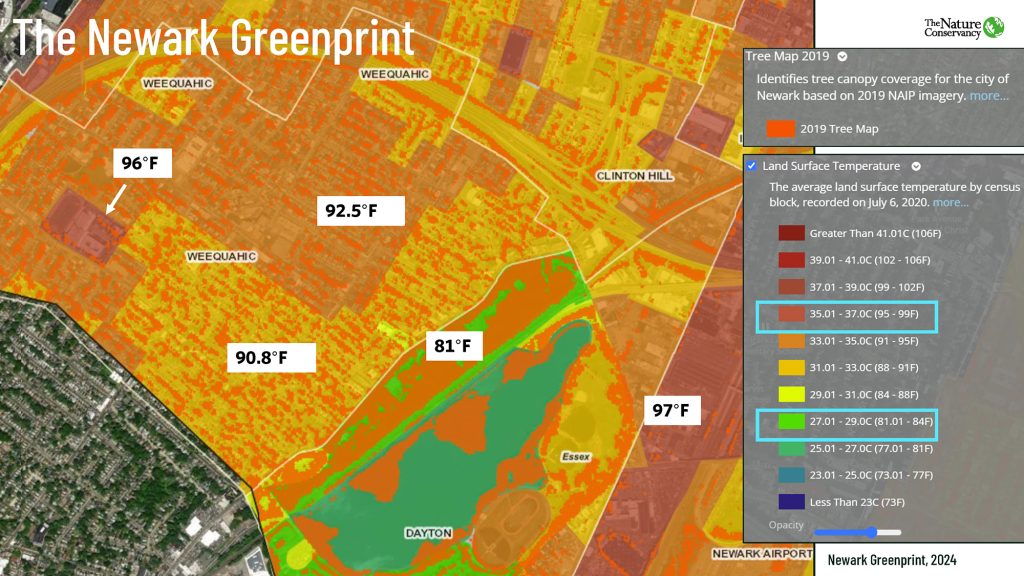
Lisa Leone, Cities Stormwater Lead at The Nature Conservancy, concluded the panel presentations by underscoring the importance of integrating nature into urban areas to improve quality of life and build environmental resilience. The Nature Conservancy focuses on protecting land, restoring rivers, enhancing coastal resilience, and greening urban areas—all goals supported by infill development. Ms. Leone highlighted initiatives such as planting 30,000 street trees in Newark and Paterson to combat the urban heat island effect and reduce impervious surfaces.
Discussion
The discussion opened with a focus on one of infill development’s biggest advantages: residents of transit-oriented communities can drive up to two-thirds less than those in conventional neighborhoods. Panelists explored how municipalities and developers can support this shift by rethinking parking, prioritizing connectivity, and designing more inviting streets.
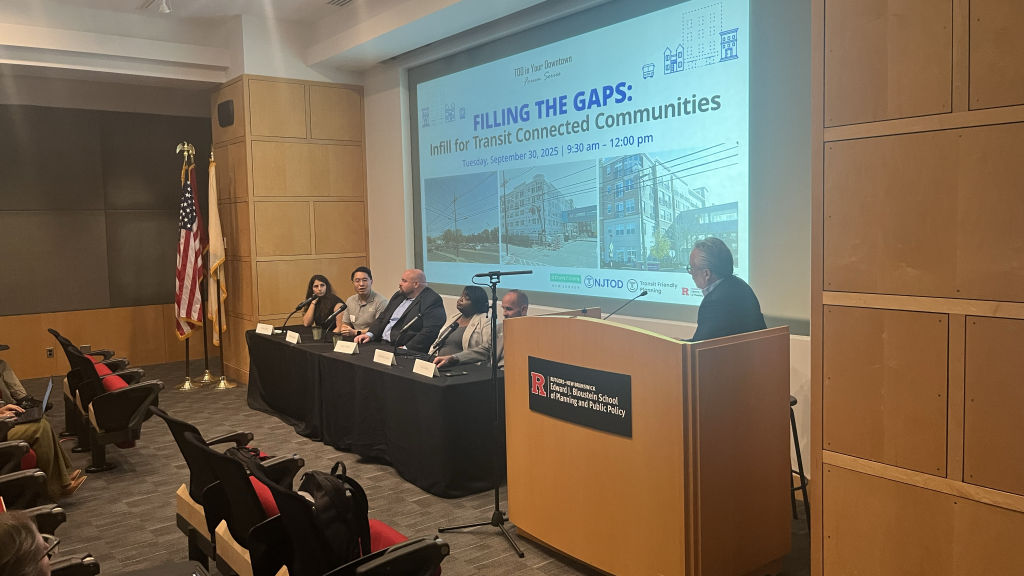
Several speakers emphasized that there is no universal formula for replacing parking with infill. Instead, strategies must respond to local context. NJ TRANSIT’s Mike Heyer noted that parking utilization in downtown areas with strong transit and pedestrian connections is often far lower than expected, suggesting that overbuilding parking can squander valuable land. Zenobia Fields explained that Plainfield targets development near transit stations and focuses on live-work spaces to reduce reliance on cars. The City is also experimenting with shuttle services to strengthen first- and last-mile connections. Tim Evans added that the aim is not to eliminate cars entirely, but to shorten trips and give residents safer, more convenient options for walking and biking. Michael Hong underscored the role of design details—such as sidewalks, bump-outs, and street trees—in making car-light lifestyles both possible and attractive.
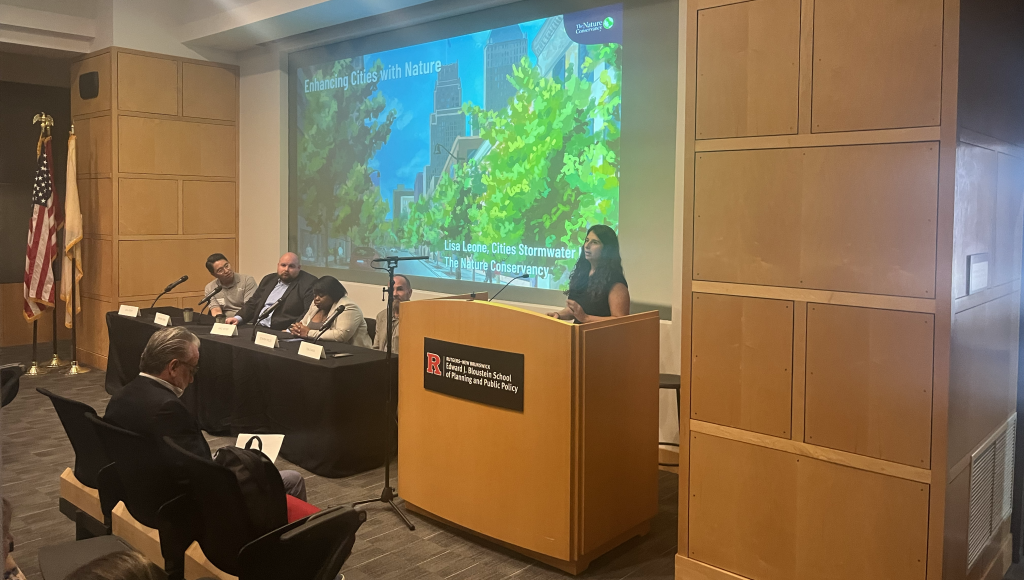
The conversation then turned to how municipalities and developers can build stronger networks and partnerships. Hong described how community engagement shaped his Madison project, ensuring that site selection and design responded directly to residents’ priorities for walkability and connections to schools and downtown. Fields highlighted the importance of integrating projects into a broader community vision, using tools like comprehensive plans and public–private partnerships to deliver amenities such as plazas and sidewalks. Evans pointed out that while developers can improve the parcels they control; planners must ensure these pieces knit into a continuous pedestrian network. Heyer emphasized that NJ TRANSIT’s redevelopment efforts succeed when surrounding communities support a high-quality public realm. Lisa Leone added that municipalities should build on existing patterns of activity rather than assuming that new development alone will generate foot traffic.
Large-scale redevelopment projects often require close coordination between agencies, municipalities, and developers. Heyer explained how NJ TRANSIT typically acts as a property owner and relies on tools like Payments in Lieu of Taxes (PILOTs) to make projects financially viable. He also cited Transit Village Initiative support. Fields noted that Plainfield has also used PILOTs and state programs, such as NJEDA’s Cultural Arts Facilities Expansion (CAFÉ) and Aspire initiatives and NJHMFA resources, to fund downtown redevelopment.
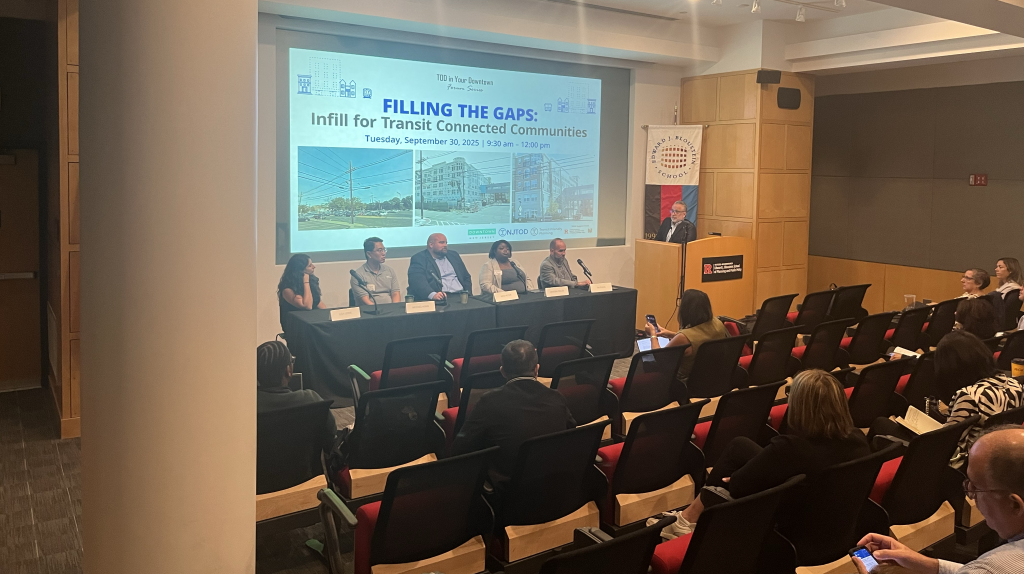
Finally, the panel addressed how environmental perspectives on infill have evolved. Leone described how The Nature Conservancy focuses on integrating stormwater management and shade into urban design to create resilient, livable public spaces. Evans observed that over the past two decades, environmental groups have shifted from opposing development to supporting targeted growth in already built-up areas—a change driven in part by generational preferences for walkable, transit-rich neighborhoods.
The session concluded with a lively Q&A, with attendees raising questions about community pushback, building partnerships, and strategies for meaningful engagement. Megan Massey, Director of Transit Friendly Planning at NJ TRANSIT, wrapped up the event by thanking the panelists, highlighting TFP’s Gentle Density and Missing Middle Housing in New Jersey Guide, and notifying attendees that a follow-up survey would be sent to capture additional feedback.
Looking Ahead
The event underscored how infill development can advance sustainability, equity, and economic growth by concentrating development near transit and enhancing connectivity. Panelists highlighted the importance of context-driven planning, strong public-private partnerships, and integrating pedestrian, cycling, and environmental considerations to maximize the benefits of these projects.
Successful infill requires collaboration among municipalities, developers, transit agencies, and community members. By aligning planning efforts with local priorities, leveraging strategic funding tools, and designing for people-centered mobility, communities can create more vibrant, accessible, and resilient neighborhoods. The insights shared during this forum provide a roadmap for translating transit-oriented development from concept into impactful, inclusive outcomes.

